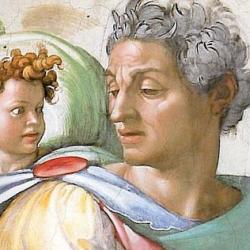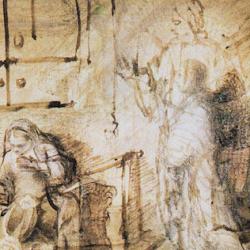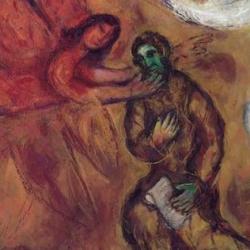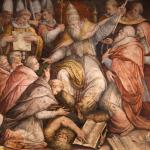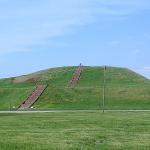Isaiah 63 begins with a question: Who is this? He comes from the direction of Edom, his clothing is stained (the Heb. verb is chametz, “leavened”. Yahweh answer: “I speaker of righteousness, mighty to save” (v. 1; Heb. for last phrase rab lehoshiy’a).
Verse 2 asks another question: Why the stained clothes? Yahweh answers in parallel verses:
A. I was alone
B. I trod and trampled in anger
C. I am stained with juice.
A’. There was no one to help
B’. I brought salvation and wrath
C’. I poured juice on earth.
Between C and A’, though, there is a unique line, verse 4: “The day of vengeance was in My heart, and My year of redemption has come.” The stains on Yahweh’s clothing are signs of the times, a time of vengeance that is simultaneously a year of redemption.
The reference to “year” takes us back to the Jubilee imagery of 61:1-3 (cf. Leviticus 25). Yahweh’s year of liberation and return and redemption of slaves is also a time of wrathful vengeance.
And the image of Yahweh trampling the wine press holds the two together. He stomps on the grapes, which represents the peoples (v. 6), and squeezes out their juice. But this image of destruction aims to produce the joy of salvation.
If you want wine, you’ve got to break some grapes.






